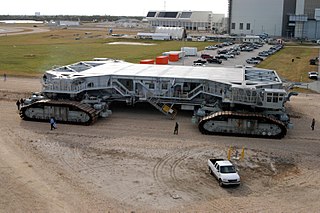
A Web crawler, sometimes called a spider or spiderbot and often shortened to crawler, is an Internet bot that systematically browses the World Wide Web and that is typically operated by search engines for the purpose of Web indexing.

Googlebot is the web crawler software used by Google that collects documents from the web to build a searchable index for the Google Search engine. This name is actually used to refer to two different types of web crawlers: a desktop crawler and a mobile crawler.

Clinidae is a family of marine fish in the order Blenniiformes within the series Ovalentaria, part of the Percomorpha. Temperate blennies, the family ranges from the Atlantic, Pacific, and Indian Oceans, in both the Southern and Northern Hemispheres. The family contains about 86 species in 20 genera, the 60-cm-long giant kelpfish being the largest; most are far smaller.

Scale insects are small insects of the order Hemiptera, suborder Sternorrhyncha. Of dramatically variable appearance and extreme sexual dimorphism, they comprise the infraorder Coccomorpha which is considered a more convenient grouping than the superfamily Coccoidea due to taxonomic uncertainties. Adult females typically have soft bodies and no limbs, and are concealed underneath domed scales, extruding quantities of wax for protection. Some species are hermaphroditic, with a combined ovotestis instead of separate ovaries and testes. Males, in the species where they occur, have legs and sometimes wings, and resemble small flies. Scale insects are herbivores, piercing plant tissues with their mouthparts and remaining in one place, feeding on sap. The excess fluid they imbibe is secreted as honeydew on which sooty mold tends to grow. The insects often have a mutualistic relationship with ants, which feed on the honeydew and protect them from predators. There are about 8,000 described species.

The crawler-transporters, formally known as the Missile Crawler Transporter Facilities, are a pair of tracked vehicles used to transport launch vehicles from NASA's Vehicle Assembly Building (VAB) along the Crawlerway to Launch Complex 39. They were originally used to transport the Saturn IB and Saturn V rockets during the Apollo, Skylab and Apollo–Soyuz programs. They were then used to transport Space Shuttles from 1981 to 2011. The crawler-transporters carry vehicles on the mobile launcher platforms (MLPs) used by NASA, and after each launch return to the pad to take the platform back to the VAB.

"The Crawlers" is a science fiction short story by American writer Philip K. Dick. Submitted under the title "Foundling Home", it was first published as "The Crawlers" in Imagination magazine, July 1954.
Nightcrawler or nightcrawlers may refer to:
The dusky crawler is a species of clinid native to the coast of southern Australia, where it lives around coastal outcrops in which it can find partially sheltered, sandy bays. It can be found at depths from 5 to 10 m. It can reach a maximum total length of 8 cm (3.1 in). The specific name of this clinid honours ichthyologist Eugenie Clark (1922-2015) of the University of Maryland.
The sand crawler is a species of clinid endemic to the coast of southern Australia. It can reach a maximum total length of 9.5 cm (3.7 in).

Aulacaspis yasumatsui, or cycad aulacaspis scale (CAS), is a scale insect species in the genus Aulacaspis that feeds on cycad species such as Cycas revoluta or Dioon purpusii. Other common names include the cycad scale, the sago palm scale, and the Asian cycad scale. This is a serious pest of cycads which can kill its host plant.
Amanahyphes is a genus of little stout crawler mayflies in the family Leptohyphidae. There are at least two described species in Amanahyphes.
Leptohyphes is a genus of little stout crawler mayflies in the family Leptohyphidae. There are about 18 described species in Leptohyphes.
Macunahyphes is a genus of little stout crawler mayflies in the family Leptohyphidae. There are about six described species in Macunahyphes.
Traverhyphes is a genus of little stout crawler mayflies in the family Leptohyphidae. There are about seven described species in Traverhyphes.

Serratella is a genus of spiny crawler mayflies in the family Ephemerellidae. There are at least 20 described species in Serratella.
Drunella cornuta is a species of spiny crawler mayfly in the family Ephemerellidae. It is found in North America.
Attenella is a genus of spiny crawler mayflies in the family Ephemerellidae. There are at least four described species in Attenella.

Eurylophella is a genus of spiny crawler mayflies in the family Ephemerellidae. There are about 18 described species in Eurylophella.

Timpanoga is a genus of spiny crawler mayflies in the family Ephemerellidae. There is one described species in Timpanoga, T. hecuba.
Mesanerpeton is an extinct genus of four-limbed stem-tetrapod from the Mississippian (Tournaisian) of Scotland. It contains a single species, Mesanerpeton woodi, who based on a disarticulated specimen including a clavicle, vertebrae, and forelimb bones from the Ballagan Formation. The vertebrae are poorly-ossified and similar to Crassigyrinus, but the forelimb was robust. The shape and level of torsion present in the humerus are intermediate between Devonian stem-tetrapods and later Carboniferous tetrapods. This transitional condition, and the associated rerouting of the brachial artery and median nerve, may indicate that Mesanerpeton had a higher stride length and more efficient locomotion on land compared to its predecessors.










